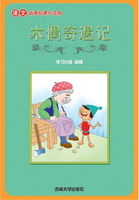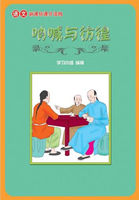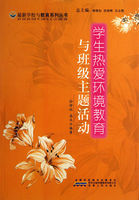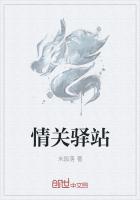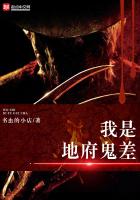It is nice to get a little pleasure out of life, a little fun from time to time. Unfortunately, many of the fun things that you can do today cost money. New York City, for example, is one of the entertainment capitals of the world. On any night, outstanding performers appear in its clubs and on its concert stages. It is also a centre of theater. Furthermore, you can dine on foods from every corner of the world in its countless restaurants. So how can it be that some people in New York do not have fun? Simple, they do not have the money to take advantage of all these attractions.
So, is money the road to success? Not really. Large numbers of people work every day, work overtime, work weekends, and make a lot of money. Are they happy? No. They have no time to form or to maintain friendship. Enjoying means taking things in, taking the time to see, to hear... Too, many people do not take the time to do this.
Surely everyone has thought at times, “If I only had a lot of money, I could be happiest person in the world.” It is important to remember, however, that money is only a means to an end, not the end itself.
本文题目为 “How Important Is Money”.作者围绕这个问题展开论述,将文章分为五个自然段,在文章的结尾处得出结论“...Money is only a means to an end, not the end itself”,观点鲜明,表达地道。
第一自然段,作者遵循论文的写作规律,在首句作者用双重否定句“No one would argue, I think, that money is unimportant”,暗示自己的观点:“Money is important”,并附以实例food,shelter,medical care 证明。
第二、三自然段观点基本一致的:“Money can buy a lot”。但是两个段落的论证方法是不一样的;第二段以simple shelter→big apartment→a house为线索从正面说明“Money can buy a lot.”。而第三自然段则抓出New York City 形形色色的entertainment, 从反面说明没有钱则不能 “...take advantage of all these attraction”。
第四自然段因势利导提出问题“So, is money the road to happiness”,从而非常自然地转入问题的另一面。作者对此问题的解答十分巧妙机智,不是正面铺开,而是抓住time 这一点来发挥:“Too many people so not take the time to do this.”。读者的联想是:享受,光有钱不行,还需要时间,除了时间之外,当然还需要其他的条件,如健康、兴趣等。
还应该指出的是,文章的末尾段先以虚拟句“if I only had a lot of money, I could be the happiest person in the world”开头,将第二、三自然段较为含蓄的观点加以凸现,紧接着又以however转折,对这个观点加以修正,提出作者本人鲜明而明确的观点。从提出论点、提供论据、得出结论的整个过程来讲,这是一篇值得研读的好文章。
Topic 2.
The Importance of keeping a Good Mood
Recently, people in modern city live under a lot of pressure from education, career or family. Cases of going mad or committing suicide of those who cannot handle the pressure well can be seen often, I think, keeping a good mood can free us from the pressure and help us to start a virtuous circulation.
I am going to justify my view in two aspects. For one thing, keeping a good mood can help make things easier for us. If we always maintain a good mood and take an optimistic and positive attitude towards life, we"ll find the most difficult things a piece of cake. For another, to be a healthy person both physically and psychologically, one should keep a good mood. A good mood is helpful to ease the symptoms of heavy stress and, to a certain extent, may turn the stress into motivation force for us to strive. Otherwise, no matter how rich we are or what a high position we occupy in work place, we will possibly feel completely exhausted, which, in turn, may have destructive effects on our health.
In a word, a good mood is the best medicine for any disease. We must be fully aware of the importance of keeping a good mood in order to live a much better life.
本文共分三段,按照introduction→body→conclusion,是一篇典型的考试作文。第一段先介绍背景,接着提出自己的观点。第二段作者从两个方面进行论证。一是好的心情可以使我们所做的任何事情变得容易。二是如果我们想做一个身体和精神上都健康的人,就必须有好心情。作者并借助反面例证证明好心情的重要性。最后作者重申好心情在当今社会非常重要,进一步突出主题。
五、说明文的写法
1.说明文的特点
说明文(exposition)是以说明的表达方式进行解说事物、阐明事理的一种文体。它主要用于说明客观事物的特点和性能、成因和功用,或者用来介绍某种操作程序和方法,或者解释某些抽象的概念和思想,或阐明某种科学原理、自然现象等。其基本特点就是具有知识性、科学性、应用性、解说性和条理性。说明文的种类很多,字典、教材、论文、序言、实验报告、产品说明书、广告、解说词、科学小品、景物介绍和年鉴等都属于说明文。
上述说明文又可以分类为:a.事物说明文(object exposition);b.事理说明文(reason exposition)。前者指的是介绍事物究竟是什么样,让读者即使不曾亲眼所见,读后能意会的文章,强调说明的对象“是什么”;后者指的是介绍与说明科学知识的说明性文章,说明某些规律,或讲述事情的原因,强调说明的对象“为什么”。
说明文不同于记叙文、议论文和描述文,其语言要求准确、简明、通俗和生动。目的是对事物作有条理的、客观的、科学的介绍和解释。同时对事物仅介绍和解释可以按时间顺序、空间顺序和逻辑顺序进行,或几种顺序综合使用。
2.说明文的写作方法
为了写好说明文,在动笔之前,先应该做到a.主题必须明确,选题合适;b.主体部分要条理清楚,层次分明;c.说明要遵照一定的逻辑顺序(如从远到近,从上到下,从主由次);d.语言要具体、准确;e.尽量使文章生动有趣。
说明文的主要写作方法有:例证法(illustration)、定义法(definition)、因果说明法(cause-effect)、分类法(classification)和对比、对照法(contrast,comparison),具体介绍如下:
(1)例证法(illustration)。
例证法是指用具体例子来说明人或事物的特征、本质及其规律的方法。所用的例子必须有代表性和典型性,这样可以把抽象的解释具体化,使事物的说明更加真实、形象,进而提高文章的质量和说明效果,使读者更加信服。说明文的举例与议论文的举例有所不同,前者是为了印证所要说明的情况属实,使人明白了解;后者是为了佐证文中观点的正确,使人信服。
例证法的写作步骤:给出主题句→用举例的方式来说明→结尾重述主题。
范文:
Practice Makes Perfect
A veteran always tells the green hands that “Practice makes perfect.” The truth of this saying is selfevident. The more one practices, the more skillful he will be. Practice helps one to be efficient both in work and study.
In English study, one has so much to learn, such as vocabulary, grammar, sentence structure, etc. To lay a solid foundation of English, he has to practice the four integrated skillslistening, speaking, reading and writing. Only through practice can he have a good command of it. For example, if one wants to speak English fluently and express himself freely, he has to take every chance to practice spoken English, such as going to the English corner, talking with foreigners, reciting some beautiful versions. If he does not practice from time to time, he will fail to make himself understood.
In our daily life, cooking is another example that shows“Practice makes perfect.” When one first learn to cook a fish, he is not familiar with the cooking process,and cannot cook it well. After several times of cooking practice he is sure to cook it well. So why not put the saying into practice.
本文是解释格言、警句、谚语的说明文。因此类题目意义比较抽象,需用具体的例子进行解释说明。本文的结构:第一段点明主题;第二、三段用具体的例子(English study)来说明如何才能熟能生巧,最后一句采用反问的形式,号召大家将熟能生巧理论运用于实际工作中。
(2)定义法(definition)。
定义说明法是对某种事物的本质特征或概念作准确而简要的说明。此类说明文的主体往往都是一些有多重含义的事物,容易引起读者的混淆或者误解。所以定义说明文能详尽地、严密而科学地回答“是什么“的问题。因为这样既能揭示事物的本质,又能确定事物的范畴。定义说明文可用演绎法或归纳法展开。使用演绎法的文章以定义开篇,后面选用其他说明文模式;使用归纳法的文章先用其他方法展开,最后才给定义。文章的结尾部分往往用总结或强调基本要点的办法重新陈述定义。
范文:
Happiness

